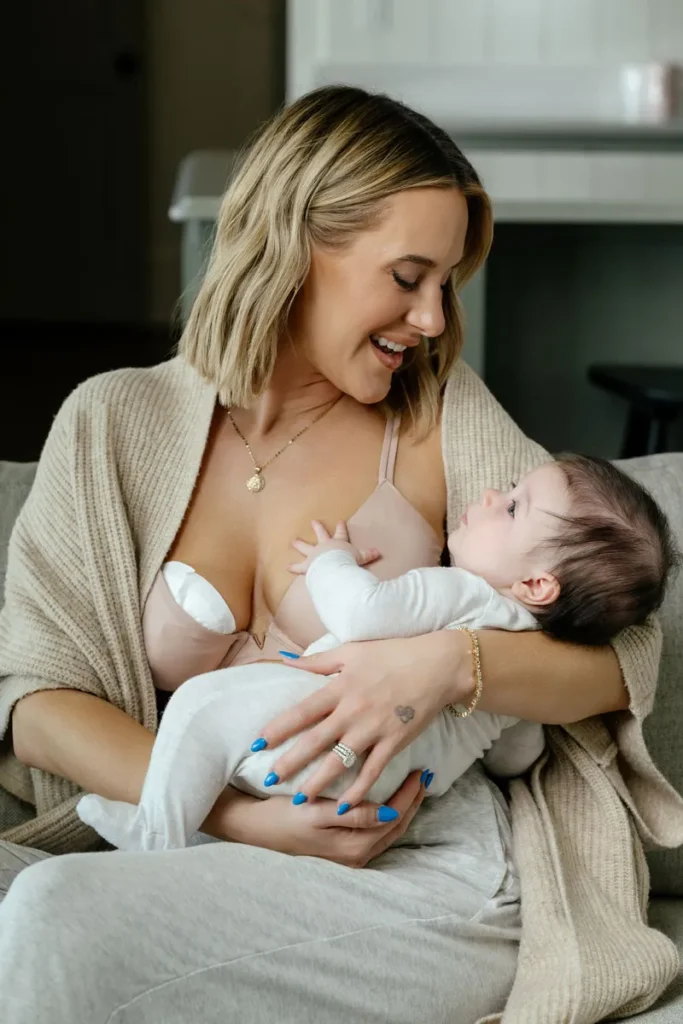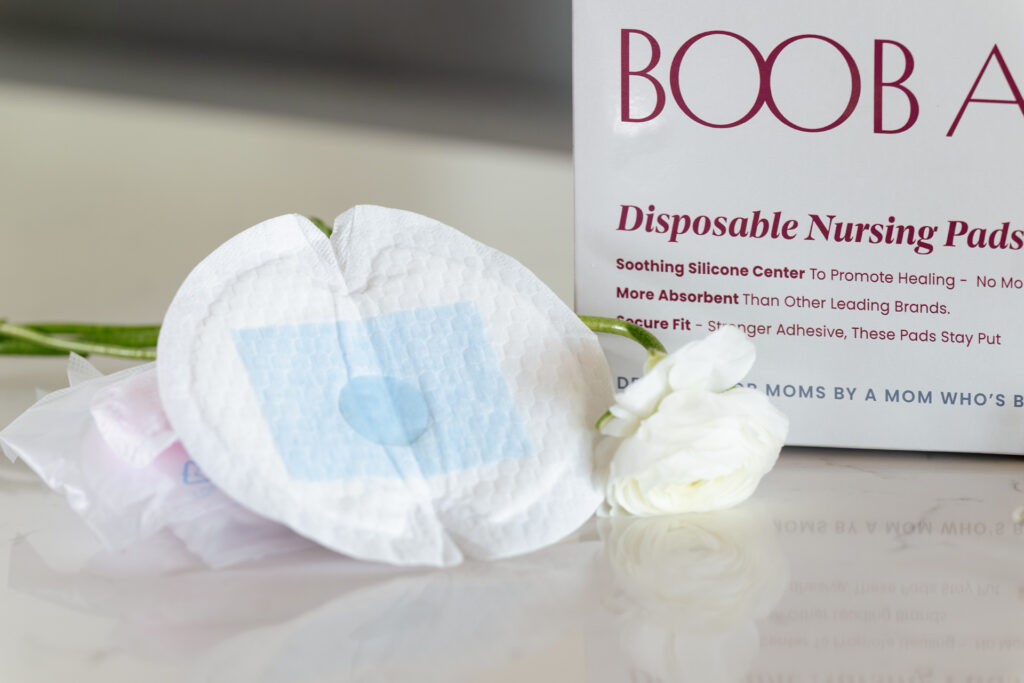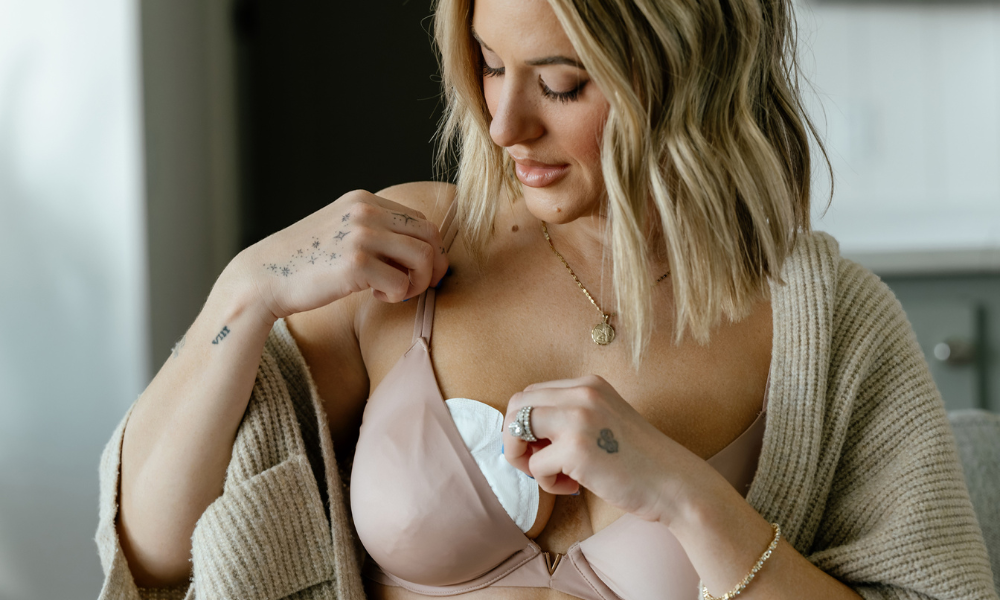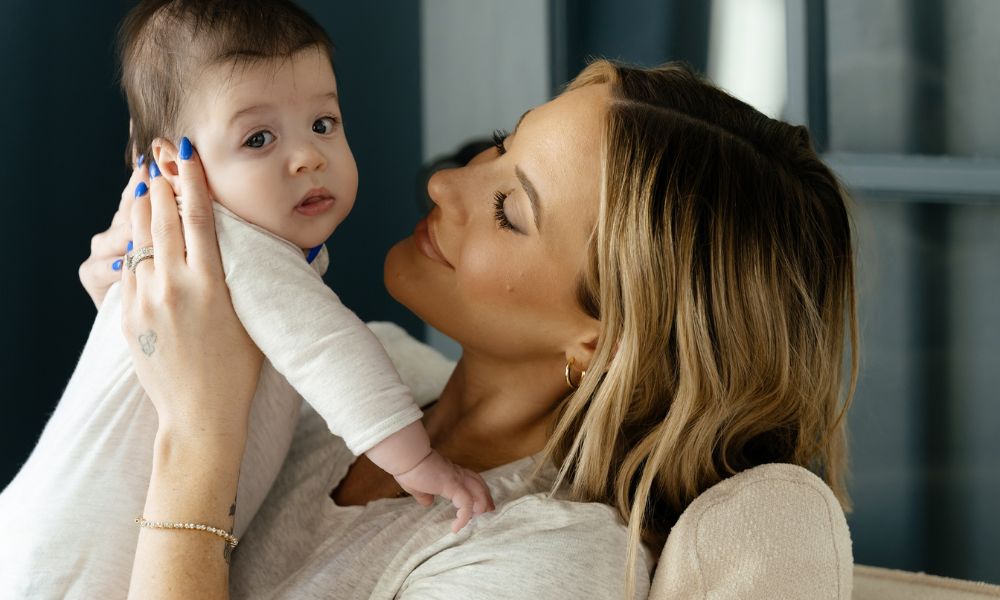A Leaky-Learning Curve Told Mama-to-Mama
I remember standing in the baby aisle while pregnant, overwhelmed by rows of tiny baby socks, swaddle blankets I couldn’t figure out, and something called “nursing pads.” I threw a box into my cart without thinking much of it. They couldn’t be that important, right?
Fast forward to three days postpartum: I was standing in my kitchen at 2 a.m., holding a crying baby, my shirt completely soaked through, wondering, Am I supposed to change these pads now? I had no idea. And somehow, none of the breastfeeding books I read covered it either.
So, if you’re here asking, How often do I need to change nursing pads? — welcome. Pull up a chair, grab a snack (because let’s be real, you probably haven’t eaten enough today), and let’s chat mama-to-mama.
Why Changing Nursing Pads Actually Matters

Let’s start with the obvious: yes, breast milk is amazing. It’s liquid gold. It nourishes, protects, and is basically a superhero in a bottle.
But for your skin? Not so magical.
Breast milk is full of moisture (duh) and sugars — a perfect combo for irritation when it sits on your skin too long. Wearing a damp nursing pad for hours can lead to:
- Itchy or red nipples
- Chafing or breakdown of sensitive skin
- Even yeast infections (yep, milk + warmth = breeding ground)
And when your nipples are already sore or cracked from cluster feeds or pumping marathons, that added irritation? Not it.
Keeping your skin dry isn’t just about comfort.
It’s about protecting your body and preventing the kind of discomfort that makes breastfeeding harder than it has to be.
How Often to Change Traditional Nursing Pads
Okay, so if you’re using traditional disposable pads — usually made from cotton or synthetic materials — here’s what you need to know.
These pads absorb moisture, which is great at first… until they reach their limit. Then they feel soggy, heavy, and sometimes cold (ew). Once they’re wet, they don’t do much except stick to your skin and give bacteria a cozy place to hang out.
Here’s a general rule:
- Change every 2–4 hours
- Change immediately after a leak
- Always swap them out after applying creams or ointments
- Overnight? Try doubling up or changing after your baby’s first stretch of sleep
The problem is, you might be changing them a lot — especially during those first few weeks when your milk is regulating and your body’s trying to figure things out.
And honestly? Constantly peeling off soggy cotton, sticking on new ones, and trying to keep your shirt clean? It’s exhausting. That’s why I switched to something that actually works with my life.
Enter Boob Aid Nursing Pads: The Upgrade You Didn’t Know You Needed
Let me paint a picture for you.
You’ve just finished nursing. Your baby’s full, finally asleep, and you settle into the couch for a rare moment of peace. Ten minutes later… dampness. Again. That sticky, itchy feeling creeps in and suddenly, you’re changing pads again.
Now imagine this instead:
You’re still dry. Still comfortable. Still protected.
That’s what happened when I started using Boob Aid Nursing Pads. They’re not just a replacement — they’re a total reimagining of what nursing pads should feel like.
What makes Boob Aid different:
- Breathable silicone that doesn’t trap heat or moisture
- Patented healing reservoir that holds ointments in place (without soaking them up)
- Stays in place with a soft natural grip — no adhesive, no shifting
- Longer wear time without the gross soggy feeling
With Boob Aid, I noticed right away: I was changing my pads half as often. That meant fewer interruptions, fewer wasted pads, and far less discomfort.
What’s a Typical Pad Change Schedule?
Every mama is different, and every boob has its own agenda (why does one always leak more than the other?!), but here’s a general guideline based on experience:
Early Postpartum (First 6 Weeks)
- Change every 2–4 hours
- This is peak leakage time — your milk is coming in, and your let-downs may be a bit… enthusiastic
- Even with Boob Aid, plan on more frequent changes
Months 2–4
- Change every 4–6 hours
- Your milk supply starts to stabilize and leaking typically slows down a bit
- Boob Aid pads often last comfortably through that window
After Month 4
- Change once or twice a day
- By this stage, many moms only leak during longer stretches without feeding or pumping
- With Boob Aid, some mamas go a whole workday with the same pad — seriously!
How Do You Know It’s Time to Change?
Trust your body. But also, here are some sure signs:
- You feel damp, sticky, or cold
- Pads are heavy or swollen with milk
- You notice skin irritation, redness, or itchiness
- There’s any unpleasant odor (breast milk should smell slightly sweet — if it’s off, it’s time to toss)
Pro tip: Just keep a stash nearby — in your diaper bag, nightstand, purse, glove box. One less thing to stress about.
My Final Thoughts: Life’s Too Short for Soggy Pads
Let’s be real — motherhood is already full of things you can’t control. Spit-up on your shoulder, a diaper blowout in public, a nap that lasts exactly 11 minutes…
Changing your nursing pads constantly shouldn’t be another thing on your endless to-do list.
Boob Aid Nursing Pads changed the game for me. They made comfort the default instead of something I had to work for. And when you’re in the thick of new motherhood, even the smallest comforts feel huge.
So if you’re still wondering how often to change your nursing pads — here’s the real answer:
As often as you need to stay dry, happy, and confident.
And if you’re using Boob Aid? That won’t be nearly as often as you think.

FAQs: All About Changing Nursing Pads
1. How often should I change my nursing pads each day?
With traditional pads, every 2–4 hours is common. With Boob Aid Nursing Pads, most moms find they can comfortably go 4–8 hours or even longer, depending on leak levels.
2. Can I wear nursing pads overnight?
Absolutely! In fact, Boob Aid Nursing Pads are great for overnight because they stay in place and offer breathable leak protection — no adhesive needed, no soggy mess.
3. What if one breast leaks more than the other?
That’s totally normal. You may need to change one pad more often than the other. Boob Aid makes it easy because they’re quick to swap without adhesive hassle.
4. Can I reuse Boob Aid Nursing Pads?
Nope, they’re disposable — but thoughtfully designed for longer wear. You’ll use fewer per day compared to cotton pads, which makes them just as efficient (and way more comfortable).
5. How do I know if my nursing pad is causing irritation?
Redness, itching, or sensitivity can all be signs. Traditional pads can trap heat and moisture, leading to irritation. Boob Aid’s breathable silicone helps reduce those risks and is gentle on sensitive skin.
Ready to ditch soggy pads for good?
Try Boob Aid Nursing Pads and discover the comfort you should’ve had from day one.
👉 BoobAidNursingPads.com — because you deserve better than damp.
Read More

How Many Nursing Pads Do You Need in a Year?

How Long Do You Need Nursing Pads?

8 Hacks to Make Breastfeeding More Comfortable




